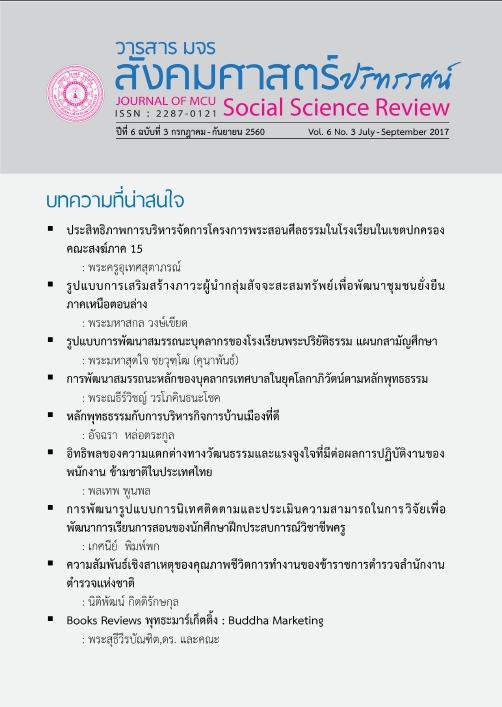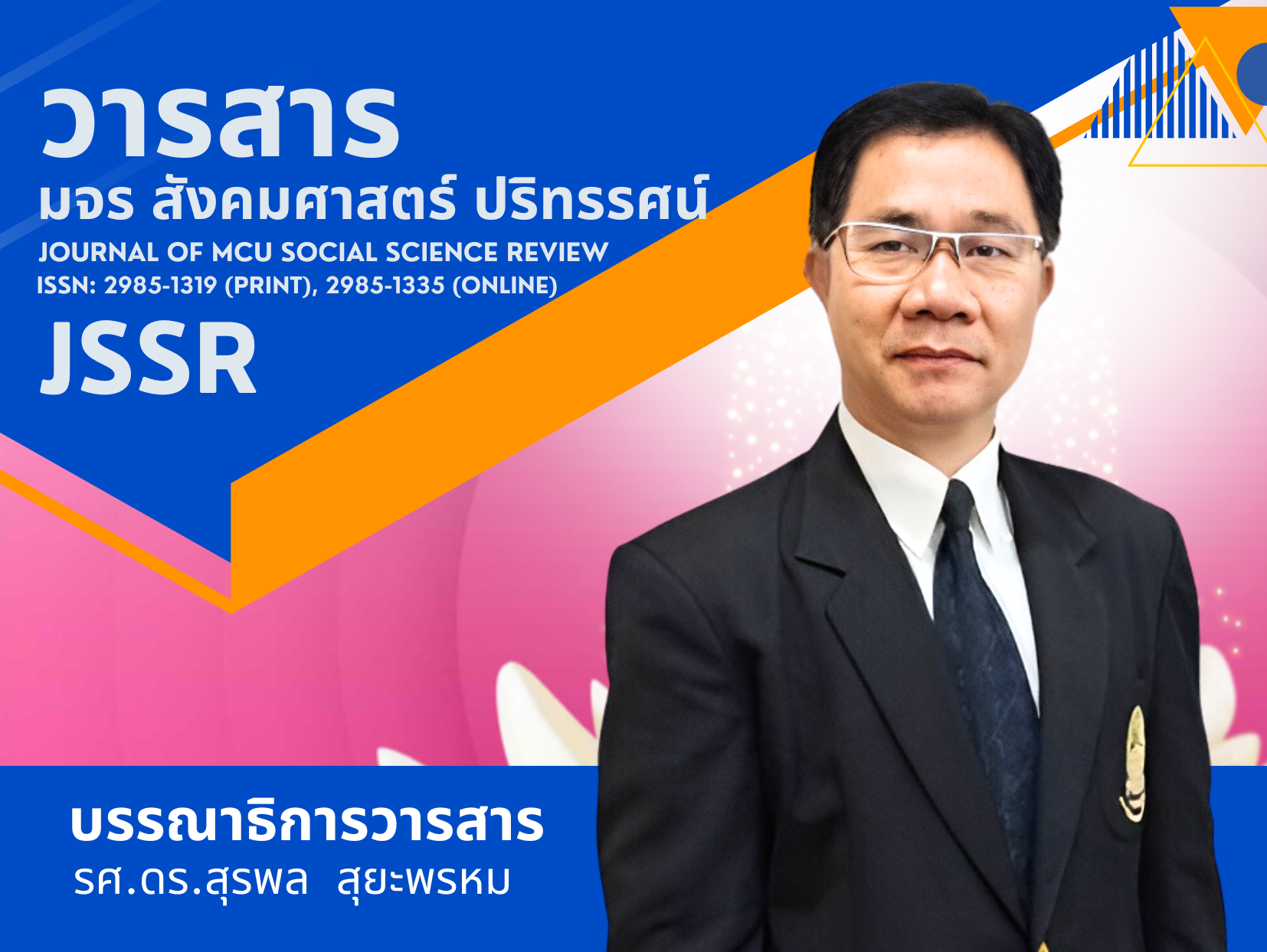THE MODEL OF LEADERSHIP STRENGTHENING FOR GROUP THE TRUTH SAVINGS SUSTAINABLE COMMUNITY DEVELOPMENT, IN LOWER NORTHERN REGION
Keywords:
leadership veracity saving group sustainable community development Bhavana 4Abstract
Objectives of this research were 1. To study the leadership characteristics of the Truth savings groups for sustainable community development at lower northern region, 2. To study the factors affecting the leadership characteristics of the Truth saving groups for sustainable community development at lower northern region, and 3. To study the leadership strengthening model of the Truth saving groups for sustainable community development at lower northern region in accordance with Bhavana 4.
Methodology was the mixed methods. The qualitative esearch collected data from 20 key informants by face-to-face interviewing and from 9 participants in focus group discussion. Data from both methods were analyzed by descriptive interpretation. The quantitative research collected data with questionnaires from 367 samples from the populations at the lower northern region; Phisanulok and Kampengpet Provinces. Data were analyzed by descriptive statistics; frequency, percentile, mean, standard deviation and Pearson’s Correlations.The findings were as follows:
1.The leadership characteristics of the Truth saving groups for sustainable community development at lower northern region was the decision must be made on democratic system by listening to majority with righteousness and job achievement. There were three kinds of leadership: Change leadership; leaders who understood how to use modern technology for change were at middle level. Behavioral leadership; leaders who devoted to work righteously were at low level. Contingency leadership; leaders who could work and adapt to any circumstances were at middle level. By overall, the leadership of the Truth saving groups at lower northern region was at middle level, needed to be developed
- Factors correlating to the leadership characteristics of the Truth saving groups for sustainable community development at lower northern region were that persons who work for other people and community must process patience, no bias, honesty and good behavior resulting from physical, mental and wisdom development. Physical development or Gayapavana, induced change leadership, behavioral development, Silapavana, induced behavioral leadership dedicating to the work success righteously, while mental and wisdom development induced contingency leadership being able to lead self, man and work in all circumstances
- The leadership characteristics development model of the Truth saving groups for sustainable community development at lower northern region of 3 kinds of leadership were that;
3.1.Behavioral leadership; 3.1.1 Gayapavana to develop good physical and respectable appearance.3.1.2 Silapavana to develop the participatory awareness of rules and regulations abiding,3.1.3 Cittapavana to develop the leadership with no bias in one’s mind, 3.1.4 Panna pavana, wisdom development, to develop the shrewdness to be able to use wisdom to help others with academics, creativeness, morality, good thinking, good speaking and good deed.
3.2. Change leadership; 3.2.1.Gayapavana, physical development, to develop all members in community to have good health and well-beings, 3.2.2. Silapavana, morality development, to develop extra incomes and honesty, 3.2.3. Cittapavana, mental development, to develop good hearts for sharing good advices integrated with morality to community members, 3.2.4. Pannapavan, wisdom development was to be able to share academics and creativity to the community members.
3.3 Contingency leadership; all 4 Pavana components must be used to develop interrelations between community members, to create work skills and problem solving in all situations. Leaders were able to lead community members to monasteries for sermon listening and morality practice. Pavana 4 would create harmony living together and to generate loving-kindness, benevolence and far vision.
References
Mittheevivatrakul. (2559). Model of Role Development in Local Government Administration of Women in Thailand. Journal of Social Sciences,5(2),31-42
Phra Khru Wibulthithham. (2558). Documentary lecture on the collection of Wat Nong Phayom. Nong Phraya Market Demonstration Center.
Phra Thep Phutiyatmatee (Sarit Siri). (2010). Buddhist Leadership and Conflict Management in Thai Society. Mahachulalongkornrajavidyalaya University.
Phraracchapariyatvithan. (2016, May - August). Buddhist Integrity in Human Resource Development of Prathom Suksa School, Department of General Education, Group 4. Journal of Social Sciences,5(2),55-65.
Pudongsak Chamnanbruk. (2009). Model of capacity development of personnel in emergency medical services in the community: case study in Thailand and the public for the Lao People's Democratic Republic. Department of Strategy Development. Graduate School: Loei Rajabhat University.
Wanayawan Wan. (2558). Development of Buddhist Leadership of the Teachers of the School of General Education, Group 3. Journal of Social Sciences,2(2).
Downloads
Published
How to Cite
Issue
Section
License
Copyright (c) 2018 Journal of MCU Social Science Review

This work is licensed under a Creative Commons Attribution-NonCommercial-NoDerivatives 4.0 International License.
In order to conform the copyright law, all article authors must sign the consignment agreement to transfer the copyright to the Journal including the finally revised original articles. Besides, the article authors must declare that the articles will be printed in only the Journal of MCU Journal of Social Sciences. If there are pictures, tables or contents that were printed before, the article authors must receive permission from the authors in writing and show the evidence to the editor before the article is printed. If it does not conform to the set criteria, the editor will remove the article from the Journal without any exceptions.




